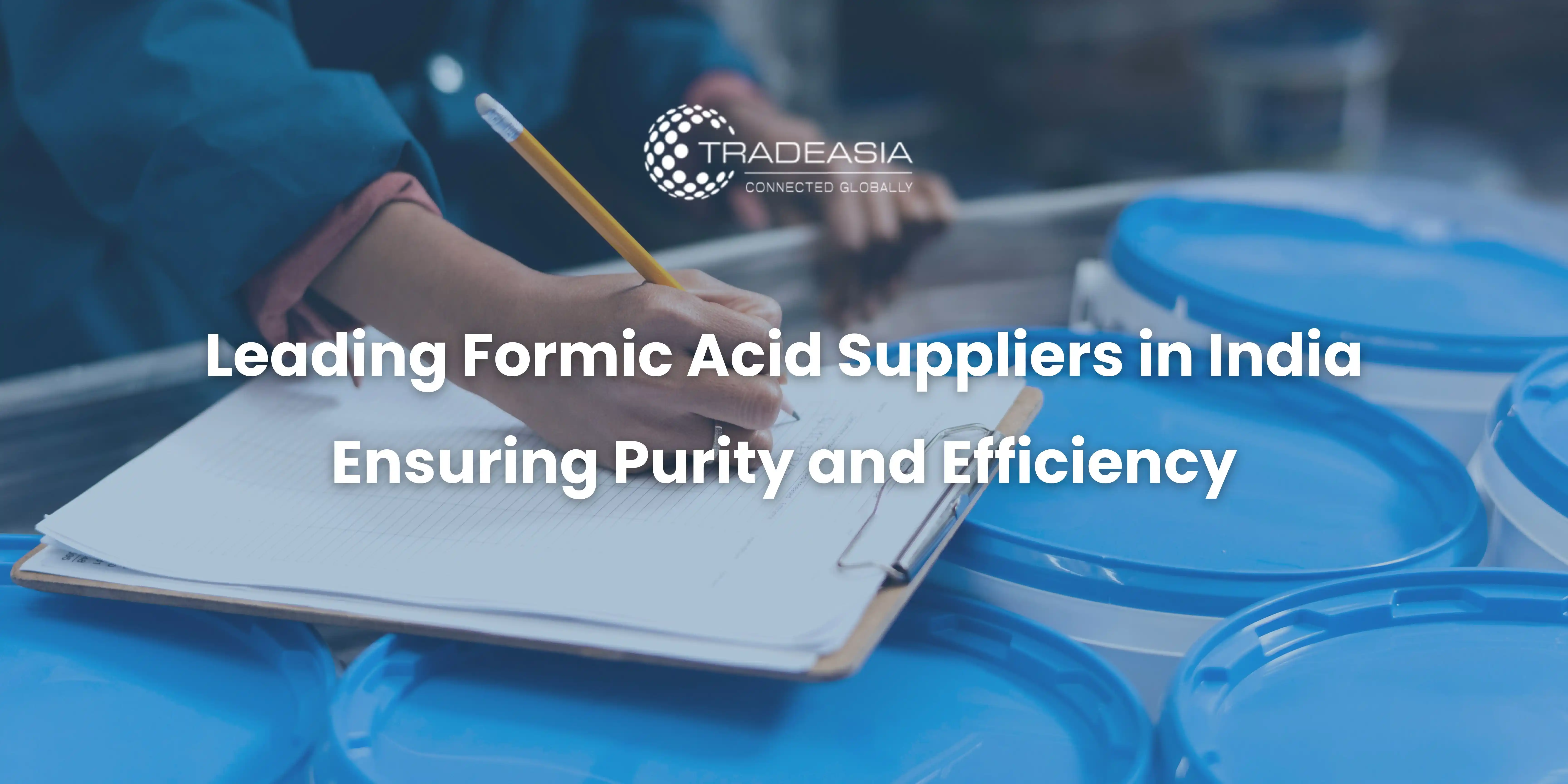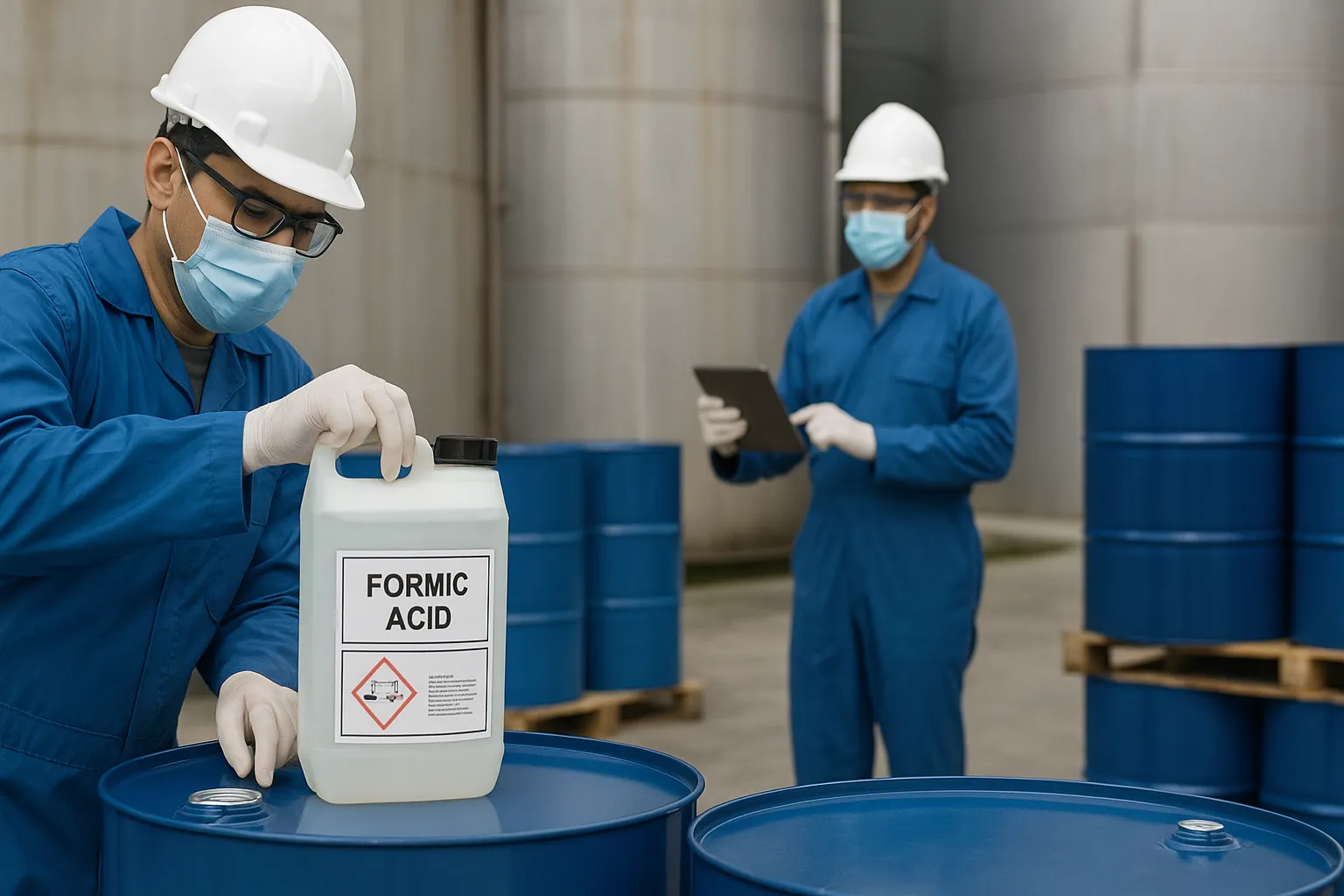Introduction
The formic acid market in India is witnessing significant growth, driven by its diverse industrial applications and increasing demand across sectors such as agriculture, leather, and textiles. As a versatile chemical, formic acid plays a crucial role in various manufacturing processes, making it a key component of India's chemical industry. With the country's rapid industrialization and expanding agrochemical sector, the demand for formic acid is projected to rise steadily through 2025.
This article provides a comprehensive analysis of the formic acid market in India, exploring the key demand drivers, current trends, challenges, and future projections. By examining real-world data and industry insights, we aim to offer valuable perspectives for businesses, investors, and stakeholders looking to capitalize on emerging opportunities in this dynamic market.
Overview of Formic Acid and Its Industrial Applications
Formic acid (HCOOH) is a colorless, pungent liquid with strong antibacterial and preservative properties. It is widely used in industries such as agriculture, where it serves as a silage preservative and animal feed additive. Additionally, formic acid is a critical component in leather tanning, helping to remove hair and soften hides. Its role as a coagulant in rubber production and a pH regulator in textile dyeing further underscores its industrial significance.
In India, the agrochemical sector accounts for nearly 40% of formic acid consumption, followed by leather processing (30%) and textiles (15%). Emerging applications in pharmaceuticals and cleaning products are also contributing to market expansion. The chemical's biodegradability and effectiveness in niche applications make it a preferred choice for sustainable industrial practices.
Key Demand Drivers for Formic Acid in India
The growing agricultural sector is a primary driver of formic acid demand in India. With increasing emphasis on livestock productivity and silage preservation, farmers are adopting formic acid-based solutions to enhance feed quality. Government initiatives like the National Mission on Sustainable Agriculture further support this trend by promoting efficient farming techniques.
Another major driver is the leather industry, which contributes significantly to India's exports. States like Tamil Nadu and Uttar Pradesh, home to major tanning hubs, rely heavily on formic acid for processing raw hides. Rising demand for leather goods in domestic and international markets is expected to sustain this demand. Additionally, the textile industry's shift toward eco-friendly dyeing processes is fueling the adoption of formic acid as a safer alternative to traditional chemicals.
Formic Acid Market Trends and Current Scenario
India's formic acid market is currently valued at approximately $120 million, with a compound annual growth rate (CAGR) of 5.2% from 2020 to 2023. Domestic production meets about 60% of demand, while the remainder is imported from China and Europe. Key players like BASF, Gujarat Narmada Valley Fertilizers & Chemicals (GNFC), and Perstorp dominate the supply chain, leveraging advanced production technologies.
A notable trend is the increasing preference for high-purity formic acid in pharmaceutical applications. Companies are investing in R&D to develop specialized grades, catering to niche markets. Additionally, sustainability concerns are pushing manufacturers to adopt greener production methods, aligning with global environmental standards.
Challenges and Opportunities in the Formic Acid Market
Despite its growth prospects, the formic acid market faces challenges such as price volatility of raw materials (methanol and carbon monoxide) and stringent environmental regulations. Fluctuations in methanol prices directly impact production costs, squeezing profit margins for manufacturers. Compliance with REACH and other regulatory frameworks also adds to operational complexities.
However, opportunities abound in emerging applications like fuel cells and energy storage, where formic acid is being explored as a hydrogen carrier. Collaborations between academia and industry to innovate new uses could unlock untapped potential. Furthermore, government support for Make in India initiatives may boost domestic production capacity, reducing reliance on imports.
Formic Acid Market Forecast for 2025
By 2025, India's formic acid market is projected to reach $160 million, growing at a CAGR of 6.5%. The agrochemical sector will remain the largest consumer, driven by rising food security concerns and livestock demand. The leather and textile industries are also expected to contribute significantly, supported by export growth and sustainable manufacturing trends.
Regional analysis indicates that Western and Southern India will lead market expansion, owing to their strong industrial base. Investments in capacity expansion by companies like GNFC and the entry of global players could further reshape the competitive landscape. Technological advancements in production processes will likely enhance efficiency and reduce costs, benefiting end-users.
Conclusion
The formic acid market in India is poised for robust growth, underpinned by rising industrial demand and innovative applications. While challenges like raw material price fluctuations persist, strategic investments and regulatory compliance can mitigate risks. Stakeholders must stay attuned to evolving trends and leverage opportunities in high-growth sectors to maximize returns.
For businesses seeking to enter or expand in this market, understanding regional dynamics and consumer preferences will be key to success. As India's chemical industry continues to evolve, formic acid will remain a critical component, driving efficiency and sustainability across multiple sectors.



Leave a Comment